Exterior Side Finishing
Illustrated here are three basic finish systems. The first one is the exterior insulation finish system (EIFS). The second one is the conventional Portland cement stucco system, of which are two variations. The third is the brick veneer system.
Note: The limitations provided here are taken from appropriate building product manufacturer's source. For more and the latest information relative to these limitations, it is recommended to contact either the representative association or a specific building product manufacturer. A partial list of associations, and their links is provided on the home page of this site.
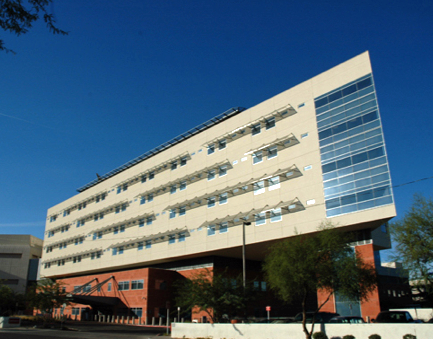 EXTERIOR INSULATION FINISH SYSTEM
EXTERIOR INSULATION FINISH SYSTEM
The basic components in the system are: sheathing, air/water barrier, adhesive, insulation, basecoat, reinforcing mesh, and the finish.
Glass Mat Gypsum Substrate for use as Sheathing
Composition: Non-combustible treated gypsum core with glass mat facers. Available in fire resistive Type X Core.
Size: 1/2”or 5/8” thick, 4’ wide x 8’ - 10’ long
Application: Exterior Walls
Compliance: Per ASTM C1177 Standard Specification for Glass Mat Gypsum Substrate for Use as Sheathing
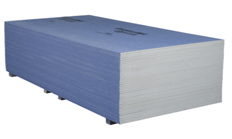 Limitations:
Limitations:
Not for use as a nail base.
Not intended for continuous exposure to or cascading water.
Not recommended for lamination to masonry surfaces.
Not recommended for below grade applications.
Max. stud spacing is 24 inches on center.
Not a finished surface.
Installation: Per Manufacturer’s Recommendations
Architectural Spec: 06 16 43 Gypsum Sheathing
More and Latest Information Link: www.gypsum.org
Air/Water Barrier
Composition: Fluid-applied, acrylic-based primary air barrier material that cures to form a seamless membrane.
Size: 5 Gallon Pail
Application: Sprayed over water sensitive substrates in EIFS applications.
Compliance: ASTM E2357 Standard Test Method for Determining Air Leakage of Air Barrier Assemblies
Limitations:
Use only when surface and ambient temperatures are and will remain above 40° F (4° C) during application and drying period.
Do not use when temperature is above 100°F (38°C).
Material can be left exposed to weather for up to 6 months. Protect with cladding within 6 months of application.
Do not use on surfaces with standing water, below grade, or on surfaces subject to water immersion.
Not recommended to apply with roller or brush; use spray application.
Not recommended for spanning joints in sheathing greater than 1/8 inch (3 mm) wide.
Installation: Per Manufacturer’s Recommendations
Architectural Spec: 07 27 26 Fluid Applied Membrane Air Barriers
More and Latest Information Link: www.airbarrier.org
Adhesive/Basecoat
Composition: One-component, polymer-modified, cement based, dry powder material
Size: 47 lb. bag
Application: For bonding EPS foam to substrate.
Compliance: ASTM E2430 (or ASTM C578) Specification for Expanded Polystyrene (EPS) Thermal Insulation Boards for use in Exterior Insulation and Finish Systems (EIFS)
Limitations:
Use only when surface and ambient temperatures are above 40°F (4°C) during application and drying period.
Adhesive should not be used on weather-exposed horizontal or below grade surfaces or where immersion in water may occur.
Refer to manufacturers details for sloped surfaces.
Prevent rapid loss of moisture from exposure to direct sun, wind and high temperatures.
Installation: EIMA Guide to Exterior Insulation & Finish System Construction
Architectural Spec: 07 24 00 Exterior Finish and Insulation Systems
More and Latest Information Link: www.eima.com
Expanded Polystyrene Insulation (EPS)
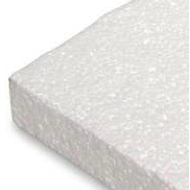 Composition: Nominal 1.0 lb/ft3 Closed Cell Expanded Polystyrene
Composition: Nominal 1.0 lb/ft3 Closed Cell Expanded Polystyrene
Size: Min. 3/4” to 12” max. thick, 24” wide x 48”
Application: Over sheathing substrate and water/air barrier on exterior side of wall.
Compliance: ASTM E2430 (or ASTM C578) Specification for Expanded Polystyrene (EPS) Thermal Insulation Boards for use in Exterior Insulation and Finish Systems (EIFS)
Limitations:
Material requires NFPA 285 Standard Fire Test Method for Evaluation of Fire Propagation of Exterior Non-Load Bearing Wall Assemblies.
Containing Combustible Components.
Material degrades under UV.
Material considered vapor semi-permeable (5 Perms).
Installation: EIMA Guide to Exterior Insulation & Finish System Construction
Architectural Spec: 07 24 00 Exterior Finish and Insulation Systems
More and Latest Information Link: www.eima.com
Reinforcing Mesh
Composition: Coated glass fiber fabrics. There are various strengths available to meet specific applications.
Size: 38” or 48” wide x 75’ or 150’ long rolls
Application: Over EPS insulation and embedded in basecoat of EIFS.
Compliance: ASTM E2098 Standard Test Method for Determining Tensile Breaking Strength of Glass Fiber Reinforcing Mesh for Use in Class PB Exterior Insulation and Finish Systems (EIFS), after Exposure to a Sodium Hydroxide Solution
Limitations:
Use only in accordance with written manufacturers specifications.
Installation: EIMA Guide to Exterior Insulation & Finish System Construction
Architectural Spec: 07 24 00 Exterior Finish and Insulation Systems
More and Latest Information Link: www.eima.com
Adhesive/Basecoat
Composition: one-component, polymer-modified, cement based, dry powder material
Size: 47 lb. bag
Application: For basecoat application of EIFS.
Compliance: ASTM E2430 (or ASTM C578) Specification for Expanded Polystyrene (EPS) Thermal Insulation Boards for use in Exterior Insulation and Finish Systems (EIFS)
Limitations:
Use only when surface and ambient temperatures are above 40°F (4°C) during application and drying period.
Adhesive should not be used on weather-exposed horizontal or below grade surfaces or where immersion in water may occur.
Refer to manufacturers details for sloped surfaces.
Prevent rapid loss of moisture from exposure to direct sun, wind and high temperatures.
Installation: EIMA Guide to Exterior Insulation & Finish System Construction
Architectural Spec: 07 24 00 Exterior Finish and Insulation Systems
More and Latest Information Link: www.eima.com
Finish Coat
Composition: Ready-mixed acrylic based textured exterior finish
Size: 5 gallon pail
Application: Over EPS insulation and embedded in basecoat of EIFS.
Compliance: EIMA Guidelines
Limitations:
Use acrylic finishes only when surface and ambient temperatures are above 40°F (4°C) and below 100°F (38°C) during application and drying period. Use only in accordance with written manufacturers specifications.
Acrylic finishes should not be used on weather-exposed horizontal, below grade or water immersed surfaces.
For Exterior Insulation and Finish Systems (EIFS), select finish colors with a lightness value of 20 or greater.
Installation: EIMA Guide to Exterior Insulation & Finish System Construction
Architectural Spec: 07 24 00 Exterior Finish and Insulation Systems
More and Latest Information Link: www.eima.com
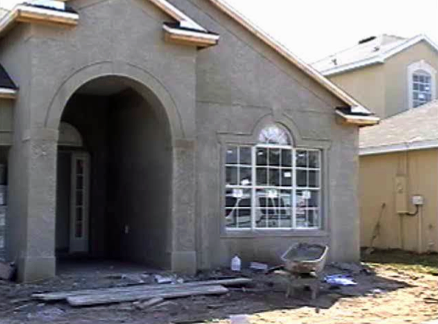 CONVENTIONAL STUCCO
CONVENTIONAL STUCCO
The basic components in the system are: sheathing, air/water barrier, metal lath, and Portland cement-based stucco. Continuous insulation will be added where energy codes dictate.
Glass Mat Gypsum Substrate for use as Sheathing
Composition: Non-combustible treated gypsum core with glass mat facers. Available in fire resistive Type X Core.
Size: ½”or 5/8” thick, 4’ wide x 8’ - 10’ long
Application: Exterior Walls
Compliance: Per ASTM C1177 Standard Specification for Glass Mat Gypsum Substrate for Use as Sheathing
Limitations:
 Not for use as a nail base.
Not for use as a nail base.
Not intended for continuous exposure to or cascading water.
Not recommended for lamination to masonry surfaces.
Not recommended for below grade applications.
Max. stud spacing is 24 inches on center (check stucco suitability).
Not a finished surface.
Installation: Per Manufacturer’s Recommendations
Architectural Spec: 06 16 43 Gypsum Sheathing
More and Latest Information Link: www.gypsum.org
Air/Water Barrier
There are several options Available
Fluid Applied
Composition: Fluid-applied, acrylic-based primary air barrier material that cures to form a seamless membrane.
Size: 5 Gallon Pail
Application: Sprayed over water sensitive substrates in stucco applications.
Compliance: ASTM E2357 Standard Test Method for Determining Air Leakage of Air Barrier Assemblies
Limitations:
Use only when surface and ambient temperatures are and will remain above 40oF (4° C) during application and drying period.
Do not use when temperature is above 100°F (38°C).
Material can be left exposed to weather for up to 6 months. Protect with cladding within 6 months of application.
Do not use on surfaces with standing water, below grade, or on surfaces subject to water immersion.
Not recommended to apply with roller or brush; use spray application.
Not recommended for spanning joints in sheathing greater than 1/8 inch (3 mm) wide.
Installation: Per Manufacturer’s Recommendations
Architectural Spec: 07 27 26 Fluid Applied Membrane Air Barriers
More and Latest Information Link: www.airbarrier.org
Asphalt Saturated Grade D Paper
Composition: Asphalt Saturated Kraft Grade D Breather Type Paper
Size: 40” wide x 240 sq. ft. or 340 sq. ft. rolls
Application: Applied over gypsum sheathing in 2 ply application.
Compliance: ICC-ES AC 38 Acceptance Criteria for Water Resistive Barriers
Limitations:
Product should be covered as soon as possible.
Inspect installed product for holes or tears and repair as required.
The product is not recommended for horizontal, below grade, or roofing applications.
Installation: Per Manufacturer’s Recommendations
Architectural Spec: 07 27 13 Bituminous Sheet Waterproofing
More and Latest Information Link: Manufacturers website
Proprietary Water Barrier Systems
Composition: spun-bonded polyolefin, non-woven, non-perforated water barrier
Size: rolls
Application: Applied over gypsum sheathing in 2 ply application.
Compliance: ICC-ES AC 38 Acceptance Criteria for Water Resistive Barriers
Limitations:
Product should be used on vertical surfaces only.
The product is not recommended for horizontal, below grade applications.
Installation: Per Manufacturer’s Recommendations
Architectural Spec: 07 25 00 Weather Barriers
More and Latest Information Link: Manufacturers website
Self-Furring Metal Lath
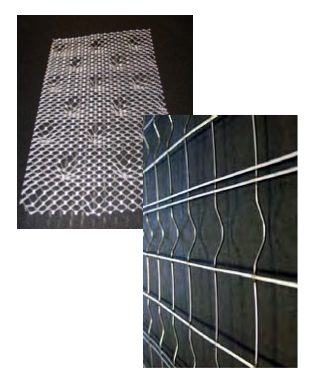 Composition: 3.4 lb per square yard self-furring expanded metal lath or 17 ga. Self-furring welded woven wire
Composition: 3.4 lb per square yard self-furring expanded metal lath or 17 ga. Self-furring welded woven wire
Size: 27” x 97” sheets
Application: Applied over gypsum sheathing and air/water barrier.
Compliance: ASTM C847 Standard Specification for Metal Lath
Limitations:
Follow control joint guidelines for Portland cement plaster.
Installation: ASTM C1063 Standard Specification for Installation Lathing and Furring to Receive Interior and Exterior Portland Cement-Based Plaster
Architectural Spec: 09 22 36 Lath
More and Latest Information Link: Manufacturers website
Portland Cement-Based Stucco
Composition: Field mix or proprietary mix of Portland cement, lime, sand, and water
Size: Various
Application: Applied in 3-coats over gypsum sheathing, air/water barrier, and self-furring metal lath.
Compliance: ASTM C926 Standard Specification for Application of Portland Cement-Based Plaster
Limitations:
Limit deflection of metal framing to L/360.
Limit framing spacing to 16 inches on center unless special procedures are met.
Portland Cement-based plaster requires control joints every 100 sq. ft.
Installation: ASTM C926 Standard Specification for Application of Portland Cement-Based Plaster
Architectural Spec: 09 24 23 Cement Stucco
More and Latest Information Link: www.stuccomfgassoc.com
Portland Cement Stucco and Continuous Insulation
The International Energy Conservation Code requires the application of continuous insulation (ci) with steel or wood framed exterior walls. For information on how to meet this requirement go to the Technical Services Information Bureau and view their technical document on the subject.
One Coat Stucco application
Conventional stucco requires three coats (scratch, brown, and finish) of independent applications of stucco to achieve the nominal overall 7/8” thickness. Proprietary formulations of the Portland cement mix allow for application in only one coat and for a thickness of 3/8”. All other components to the total assembly are basically the same as the conventional system. For more information it is recommended to go to www.nocsa.org.
BRICK VENEER
The basic components in the system are: sheathing, air/water barrier, single wythe brick veneer. Continuous insulation (ci) will be added where energy codes dictate.
This system starts with cold-formed steel framing. On the exterior flange of the stud an exterior grade gypsum sheathing or continuous insulation is installed. A water resistive barrier/air barrier is then installed. A two inch air space is recommended between the water-resistive barrier and a single wythe of brick. Special brick ties are used to attach the brick back to the cold-formed steel framing. For more specific information on this system it is recommended to download the latest version of Tech Note 28-B Brick Veneer/Steel Studs Walls from the Brick Institute of America (www.gobrick.com).
While reasonable effort has been made to ensure the accuracy of this information, we assume no liability for any errors or omissions on these pages. Please verify all information with the organizations mentioned above.
